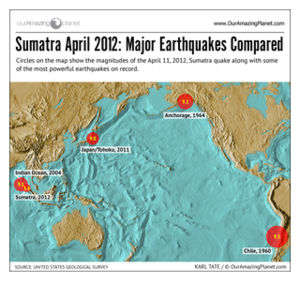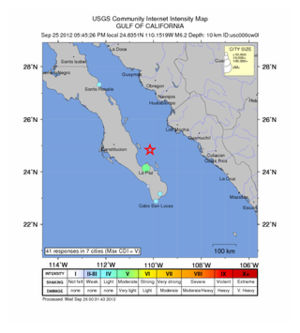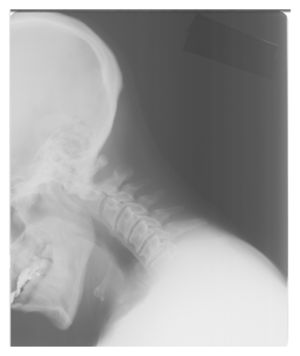|
|
No new articles. |

|
The Economic Collapse
2012-09-19 22:12:00
When it comes to materialism, has any nation ever surpassed what we are seeing in the United States right now? We define our lives by how much stuff we have, to a large degree our personal and business relationships are defined by how much money we make, and even most of the important dates on our calendar are all about materialism. Just think about it. We throw outrageous birthday parties for our kids and we shower them with gifts. Most of our "holidays" have become highly materialistic, and the biggest holiday of all in our society, Christmas, is an absolute orgy of materialism. We make lists of the "wealthiest Americans" and we glorify their achievements. We spend most of our time either making money or spending it. Even the phrase "the American Dream" reveals how materialistic we are. When most people are asked what "the American Dream" is, they start talking about a house, a car, vacations, retirement, sending your kids to college, etc. The American Dream has become all about money and stuff. Sadly, no matter how big our homes are and no matter how many shiny new toys we accumulate, we never seem to be happy. We always want more, and we always seem to be willing to go into more debt to get it. We are the most materialistic society in the history of the world, and our endless greed is going to end up swallowing us alive. When it comes to materialism in America, there are outrageous examples all around us, but one of my favorite examples is the "Rich Kids of Instagram". It is a Tumblr blog of photos from Instagram of young Americans showing off how they are enjoying the vast wealth of their parents. The following is how the Washington Post describes the blog.... |
|

|

| Puppet Masters |

|
catastroika.gr
2012-09-26 15:46:00
It was at the beginning of 1989 when the French academic Jacques Rupnik sat at his desk, in order to prepare a report on the state of the economic reforms in Mikhail Gorbatsov's Soviet Union. The term that he used in describing the death rattle of the empire was "Catastroika". In Yeltsin's time, when Russia instituted maybe the biggest and least successful privatization experiment in the history of humanity, a group of Guardian reports assigned a different meaning to Rupnik's term. "Catastroika" became synonym of the country's complete destruction by market forces; the sell off of public property; and the steep deterioration of citizens' living standards. Now, Catastroika's unit of measurement was unemployment, social impoverishment, declining life expectancy, as well as the creation of a new cast of oligarchs, who took over the country's reins. A few years later, a similar effort to massively privatize public property in unified Germany (which is presented as a model for Greece) created millions of unemployed and some of the biggest scandals in European history. It is this "Catastroika" that is coming soon to Greece; to "Europe's last Soviet Republic" as the MPs and the ministers of its former "socialist" government liked to call it. Catastroika is the logical aftermath and continuation of "Debtocracy". Therefore, the logical sequence of our first documentary, which examined the causes of the debt crisis in Greece and the European periphery as a whole. |
|

|

|
88kmitchell
Youtube 2012-09-25 11:09:00 Patrick Clawson of the influential neo-con Washington Institute for Near East Studies OPENLY suggests that the US should provoke Iran into taking the first shot. Israel Lobbyist suggests False Flag attack to start war with Iran. Just like 911 in New York causing the deaths of American civilians and soldiers, a million dead Iraqis and for what? |
|
Comment: It can't get any more clear than that. If we witness another '9/11' in the near future we will know who is to blame.
|

|

|
Stephen Castle and David Jolly
New York Times 2012-09-26 08:47:00
Clear signs of the political and social cost of the euro zone crisis sent stock markets tumbling Wednesday as debt-laden Greece faced a crippling 24-hour strike and Spain cleaned up after violent protests Tuesday near the country's Parliament. Spanish bond yields approached 6 percent for the first time in months, while European stocks and the euro fell sharply, as developments in Greece and Spain sent a new wave of anxiety through the ranks of international investors. The Euro Stoxx 50, a measure of euro zone blue chips, was down 2.3 percent in afternoon trading Wednesday. National indexes were also down, led by the Ibex in Spain, which was down 3.6 percent, and the MIB in Milan, down 3.1 percent. Stock index futures on Wall Street indicated a mild decline at the opening. The euro was at $1.2852, its lowest level in two weeks, down from $1.2950 late Tuesday in New York. Spanish bond yields had fallen back from levels thought unsustainable after the European Central Bank announced a plan Sept. 6 to buy the sovereign bonds of debt-strapped euro countries, like Spain and Italy, in amounts sufficient to bring the cost of servicing their debt down to a manageable level. |
|

|

|
RT
2012-09-26 08:43:00
Russian authorities temporary suspended the import and sale of Monsanto's genetically-modified corn after a French study suggested it may be linked to cancer. The Russia's consumer-rights regulator Rospotrebnadzor asked scientists at the country's Institute of Nutrition to review the study. The watchdog has also contacted to European Commission's Directorate General for Health & Consumers to explain the EU's position on GM corn. The report prepared by France's University of Caen and published last week, claimed that rats fed over a two-year period with Monsanto's genetically modified NK603 corn, developed more tumors and other pathologies than a test group fed with regular corn. The NK603, sold under the Roundup label, is genetically engineered to withstand glyphosate weed killer. The company criticized the study, saying it "doesn't meet minimum acceptable standards for this type of scientific research" and the data was incomplete. Monsanto also said Russia's ban will have little effect on its business as the country import small volumes of corn from the US. Besides that, the Russian government doesn't permit farmers to plant GM crops. "Russia is a net exporter of grain, so the actual impact of their temporary suspension, if any, is likely to be small," the spokesman said in a statement. |
|

|

|
Amy Barth
Fernando Torres-Vélez waits for samples in the darkness by a helicopter landing pad on Plum Island.
Situated 1.5 miles from the eastern tip of Long Island, the island's
840 acres of wildlife surround a handful of high-security laboratories
run by the Department of Homeland Security to combat livestock diseases
and bioterror threats.Discover Magazine 2012-09-26 08:30:00
Torres-Vélez, a veterinary pathologist, takes a ferry here five days a week as head of the Foreign Animal Disease Diagnostic Lab. But tonight is different. A veterinarian at the New York State Fair has reported a cow with symptoms of foot-and-mouth disease (FMD) - a virus that leaves livestock covered with lesions, too emaciated to produce milk or meat, and so contagious that an outbreak would halt all dairy and beef production in the U.S. When the helicopter lands, Torres-Vélez receives the cow's saliva sample and rushes to his lab. Within four hours his team has ruled out FMD. Plum Island is a biosafety level 3 lab, equipped to deal with diseases that don't infect humans but are contagious and possibly fatal in animals. Vaccines developed here could stop viral outbreaks in the U.S., as well as in India, Pakistan, and Afghanistan - nations where FMD still poses a threat. Given the stakes and the intrigue, Plum Island has gained a reputation for being secretive and covert. That may be deserved. A recent visitor found scientists eager to discuss their work yet careful to abide by public relations rules not to say too much. Photography was restricted unless an escort directed the camera. (Verboten: photographing the ferry dock from the Long Island side.) And yet soon Plum Island may be superseded. Within a decade, the lab is expected to move to a brand-new biosafety level 4 facility in Kansas, where scientists can study Nipah virus encephalitis and other livestock diseases that could be fatal to humans. Plans for the facility are stacked on Torres-Vélez's desk. |
|

|

|
Allan Hall
Daily Mail., UK 2012-09-25 20:00:00
Germany's Catholic Church will deny worshipers the right to Holy Communion and religious burials if people do not pay a special church tax. A newly-enforced German bishops' decree says anyone failing to pay the tax - an extra 8% of their income tax bill - will no longer be considered a Catholic. All people in Germany must pay this tax if they want to worship in either Catholic or protestant churches, or Jewish synagogues. Last year millions of files spanning decades were handed over to criminal investigators by all 27 dioceses of the Catholic Church hierarchy in Germany in a bid to get to the heart of child sex abuse by priests. It was seen as an attempt to staunch the flow of leavers who made it plain the scandal, and the inability or unwillingness to deal with it, was the reason for their departure. In 2010, 181,000 people left, an increase of 50 percent on the previous year. Last year 126,000 left. Over the past twenty years, the number of members of Germany's Roman Catholic Church has fallen from 28.3 million to 24.6 million or 30.2 percent of the country's population. Many parishioners said they were sickened that offending clergy were often simply moved to new jons where they were free to commit more crimes. Now comes the new hardline from the church which is also partly in response to a test case that has been griding through the courts and due for a decision by a court in Leipzig on Friday. |
|

|

|
Leisa Zigman I-Team Reporter
5 KDSK 2012-09-25 07:12:00 Lisa Martino-Taylor is a sociologist whose life's work has been to uncover details of the Army's ultra-secret military experiments carried out in St. Louis and other cities during the 1950s and 60s. She will make her research public Tuesday, but she spoke first to the I-Team's Leisa Zigman. The I-Team independently verified that the spraying of zinc cadmium sulfide did take place in St. Louis on thousands of unsuspecting citizens. What is unclear is whether the Army added a radioactive material to the compound as Martino-Taylor's research implies. "The study was secretive for reason. They didn't have volunteers stepping up and saying yeah, I'll breathe zinc cadmium sulfide with radioactive particles," said Martino-Taylor. Army archive pictures show how the tests were done in Corpus Christi, Texas in the 1960s. In Texas, planes were used to drop the chemical. But in St. Louis, the Army placed chemical sprayers on buildings and station wagons. |

|

| Society's Child |
|
BBC News
2012-09-26 16:59:00
A Norwegian family has won the country's national lottery three times in six years, taking home a total of more than 3m euros ($3.9m; £2.4m). Last week, 19-year-old Tord became the latest member of the Oksnes family to hit the jackpot, following his sister Hege Jeanette and father Leif. The lucky numbers were drawn every time Hege was pregnant or had just given birth. Two of the wins took place within hours of her giving birth. Tord scooped the most at 12m kroner (1.6m euros), followed by his sister with 8.2m kroner and Leif with 4.1m. Hege Jeanette told AFP news agency that her other three brothers who have yet to win the lottery are urging her to "have at least 10 children". "Having children is always nice, but it doesn't happen on command," she said. According to the Associated Press, the Norsk Tipping AS lottery company says it has seen cases where one person has won the lottery twice, but never three members of the same family winning separately. |
|

|

|
Hospitals Harvesting Organs From Patients That Doctors Were Pressured to Declare Brain Dead: Lawsuit
Christine Hsu
Medical Daily 2012-09-26 11:31:00
New York hospitals are routinely "harvesting" body parts from patients before they're even dead, a lawsuit is claiming. The suit accuses the transplant non-profit, The New York Organ Donor Network, of bullying hospital staffers to declare patients brain dead when they are still alive in order to take their organs. Plaintiff Patrick McMahon, 50, an Air Force combat veteran, is a former transplant coordinator who claims he was fired just four months into the job for protesting about the practice and estimates that one in five patients is still showing signs of brain activity when surgeons declare them dead and start ripping out their body parts. "They're playing God," McMahon told New York Post. The lawsuits, filed in Manhattan Supreme Court Tuesday, cited four examples of improper organ harvesting. One of the examples cited details of a 19-year-old man injured in a car crash who was still struggling to breath and showed signs of brain activity when doctors at Nassau University Medical Center declared him brain dead under pressure from the donor-network officials, including Director Michael Goldstein, who allegedly said during a conference call: "This kid is dead, you got that?" the suit claims. |
|

|

|
Paul Wagenseil
MSNBC News 2012-09-26 14:11:00 The volunteers are brought into a white tent. Inside sits a wise-looking, long-haired man in late middle age who calls himself Dave. He says he's a psychic. You tell Dave your name. He hugs you and lays his hands on you. Then you and he sit down and he starts telling you things no stranger should know : your address, your romantic situation, your children's names, your medical history, how much you're selling your house for, your shopping habits, your bank balance. You're amazed. You can't believe this guy knows so much about you. You can't understand how he does it. Then Dave reveals his trick. A curtain comes down, and there's a room full of researchers on computers looking for your personal details online, feeding everything they find to Dave through a hidden earpiece. As you sit there in shock, a TV screen displays the words: "Your entire life is online. And it might be used against you. Be vigilant." This entire scenario actually took place recently in Brussels, Belgium, as part of "Safe Internet Banking," a campaign for online-safety awareness carried out by the trade association Febelfin (the Belgian Financial Sector Federation). The volunteers were passers-by, and Dave was an actor. |

|

|
RT
2012-09-26 12:16:00 A rally in the Greek capital turned violent when protesters in Syntagma Square lobbed Molotov cocktails at police, who retaliated by firing tear gas at the demonstrators. Security forces also reportedly used flashbang grenades and pepper spray to push protesters back from the parliament building. According to Greek newspaper Kathimerin, the police had been ordered to refrain from using chemicals against protesters. Around 70,000 people, as estimated by Reuters, gathered in front of the parliament for the country's biggest anti-austerity protest since the new government came to power. "EU, IMF out!" shouted the angry crowd. "For the past two-to-three years we've been living an incredible social catastrophe," one of the protesters told Agence France Presse. "My salary has been cut by 50 percent. I have two children and tomorrow I don't know if I'll have a job." Clashes erupted in different parts of Athens Syntagma Square, with demonstrators throwing fire bombs at police.
|
|

|

|
RT
2012-09-26 11:56:00 Madrid riot police have cleared Plaza de Neptune of protesters, with about 200 officers securing the surrounding blocks. At least 60 people have been injured and 26 arrested as police used batons and rubber bullets to disperse the crowd. Local emergency services have confirmed that at least 60 people, including eight policemen, were injured in clashes between police and protesters, El Pais reports. One of the wounded is believed to be in critical condition, while one of the injured policemen suffered a severe concussion. |

|

|
Jason Mick
DailyTech 2012-09-26 11:16:00
Hack occurred due to exchange operator leaving his keys unencrypted Originally conceived of by science fiction writers -- most notably Neal Stephenson's cult science-fiction novel Snow Crash -- peer-to-peer cryptocurrency has been all over the headlines, following its leap to the real world, in the form of the Bitcoin. Created by a shadowy individual known as "Satoshi Nakamoto", bitcoins are an inherently anarchic construct looking to free a key piece of the global economy -- specifically, currency -- from the grip of any one nation. They're also difficult to trace, making them a popular mode of purchasing quasi-legal items. But over the year the flowers and sunshine surrounding Bitcoin has been slightly diminished. Last June, there was a massive devaluation, letting off inflationary steam and costing late adopters large amounts of real-world dollar value. Later that same month Mt. Gox, the single largest Bitcoin exchange (which trades Bitcoins for real world dollars and vice versa) was hacked. Since then we've learned about Bitcoin-stealing malware and Bitcoin Ponzi schemes. |
|

|

|
Andy Eckardt & Julia Chatterley
NBC News 2012-09-26 04:30:00 Demonstrators wearing helmets and gas masks and armed with sticks clashed with police in the Greek capital on Wednesday, as a general strike was held to protest the government's austerity drive. Riot police fought with the protesters wearing the black clothes favored by anarchist groups for about 45 minutes in the central Syntagma Square, letting off tear gas in an attempt to disperse the crowd. The demonstrators let off flares and a tent in the center of the square advertising an air show was set on fire. The anarchist group appeared to be trying to cause as much damage in the square as possible.
There were also violent clashes between anti-austerity protesters and riot police in Spain on Tuesday. Police there told The Associated Press that 38 people were arrested and 64 people injured when officers clashed with protesters demonstrating against cutbacks and tax hikes. | |
|
Comment: In case you're lacking an idea of what is, and is about to befall the majority of us:
Euro zone crisis sends stock markets tumbling Wednesday in Greece and Spain Order Through Chaos: Who Wants to Set the World on Fire? Is the food shortage before us? Will we be buying bacon and pork sausages next year? |
|

|

|
Paul Buchheit
Nation of Change 2012-07-31 23:56:00
"Charter schools also can take money away from the public system, and their teachers have fewer years of experience and a higher turnover rate." The privatization of public goods and services turns basic human needs into products to buy and sell. That's more than a joke, it's an insult, it's a perversion. It generally benefits only a privileged group of businesspeople and their companies while increasing inequality and undermining the common good. Various studies have identified the 'benefits' of privatization as profitability and productivity, efficiency, wider share ownership and good investment returns. These are business benefits. More balanced studies consider the effects on average people, who have paid into a long-established societal support system for their schools and emergency services, water and transportation systems, and eventually health care and retirement benefits. These studies have concluded that:
While privatization may lead to efficiencies in producing goods, it is generally only true under conditions of competition and regulation. The New Jersey Privatization Task Force asserted that "States that have had the most success in privatization created a permanent, centralized entity to manage both privatization and related policies aimed at increasing government efficiency." In the U.S. and around the world, privatization has simply not worked in in dustries that provide essential public goods and services: |
|

|

|
The Economic Collapse
2012-09-23 21:27:00
Are you constantly tired and do you feel incredibly stressed almost all the time? Well, that means that there is a really good chance that you are a typical American worker. Even though our incomes are going down, Americans are spending more time at work than ever before. In fact, U.S. workers spend more time at work than anyone else in the world. But it was not always this way. Back in 1970, the average work week for an American worker was about 35 hours. Today, it is up to 46 hours. But there are other major economies around the globe that are doing just fine without burning their workers out. For example, the average American worker spends 378 more hours working per year than the average German worker does. Sadly, for many Americans work is not even finished once they leave the office. According to one recent survey, the average American worker spends an extra seven hours per week on work tasks such as checking emails and answering phone calls after normal work hours have finished. Other Americans are juggling two or three jobs in a desperate attempt to make ends meet. Americans are busier than ever and work is often pushing the other areas of our lives on to the back burner. What this also means is that "family vacations" are becoming increasingly rare in the United States. In fact, Americans spend less days on vacation than anyone else in the industrialized world. While some would applaud our "work ethic", the truth is that the fact that we are being overworked is having some very serious consequences. In fact, as you will see below, Americans are literally being worked to death. The following is an excerpt from a comment that one reader posted on one of my recent articles. Can you identify with what this family is going through?.... | |
|
Comment: Having problems with stress? Check out the Éiriú Eolas amazing stress control, healing & rejuvenation program here.
|
|

|

|
BBC
2012-09-25 20:13:00
Spanish police have fired rubber bullets and baton-charged protesters attending a rally against austerity. The clashes broke out as protesters tried to tear down barriers blocking access to the parliament in Madrid. Spanish media reported that at least 20 people had been arrested and more than a dozen injured. The protesters dispersed after MPs left the building. The "Occupy Congress" protest came as the government prepares to unveil further austerity measures on Thursday. It is attempting to shrink its budget deficit, with the country in its second recession in three years and unemployment near 25%. The government will unveil the draft budget for 2013 on Thursday and is expected to present new cost-saving reforms to reassure lenders about the state of the country's public finances. |
|

|

|
Mary Shaw
The Peoples Voice 2012-09-25 20:32:00
September 21 marked the one-year anniversary of the death of Troy Davis. Davis was executed by the state of Georgia for a crime he probably did not commit. Davis's original trial was flawed, and there was no physical evidence linking him to the crime. His conviction was based solely on questionable testimony by witnesses, most of whom later recanted or contradicted their stories. Everyone from Jimmy Carter to the Pope had issued calls for clemency in his case. But the authorities killed him anyway. Now Missouri is pursuing a very similar case, with death row inmate Reggie Clemons. As with the Davis case, there is no physical evidence linking Clemons to the crime for which he was convicted, and his conviction was based solely on witness testimony. One witness had been a former suspect in the case. In other words, here too there appears to be reasonable doubt as to the defendant's guilt. This past week, Clemons was given an evidentiary hearing to review evidence of prosecutorial misconduct and police brutality in the case. One bombshell is an allegation that the star prosecution witness in the case had received a payment of $150,000 to settle a dispute with police over physical abuse. Clemons alleges that the police had abused him as well. If they can't get a confession by humane means, I guess they feel they have to beat it out of you. And that kind of "truth" is always suspect at best. |
|

|

| Secret History |
|
Stephanie Pappas
LIveScience 2012-09-26 12:12:00
It sounds like a mash-up of Indiana Jones' plots, but German researchers say a heavy Buddha statue brought to Europe by the Nazis was carved from a meteorite that likely fell 10,000 years ago along the Siberia-Mongolia border. This space Buddha, also known as "iron man" to the researchers, is of unknown age, though the best estimates date the statue to sometime between the eighth and 10th centuries. The carving depicts a man, probably a Buddhist god, perched with his legs tucked in, holding something in his left hand. On his chest is a Buddhist swastika, a symbol of luck that was later co-opted by the Nazi party of Germany. "One can speculate whether the swastika symbol on the statue was a potential motivation to displace the 'iron man' meteorite artifact to Germany," the researchers wrote online Sept. 14 in the journal Meteoritics & Planetary Science. Iron man adventure The iron man first came to Germany after a 1938-1939 Tibet expedition by zoologist and ethnology Ernst Schäfer, who was sent to the region by the Nazi party to find the roots of Aryan origin. The statue then passed into the hands of a private owner. Stuttgart University researcher Elmar Bucher and his colleagues first analyzed the statue in 2007, when the owner allowed them to take five miniscule samples of it. In 2009, the team had the opportunity to take larger samples from the inside of the statue, which is less prone to contamination by weathering or human handling than the outside where the initial samples were taken. They found that the statue is carved from a rare class of space rocks known as ataxite meteorites. These mostly iron meteorites have a high level of nickel. The largest-ever known meteorite, the Hoba meteorite of Namibia, is an ataxite meteorite that may weigh more than 60 tons. |
|

|

|
Viet Nam News
Archaeologists have found a stone tool assumed to be an early calendar
dating back 4,000 years in a cave in the northern province of Tuyen
Quang. The stone tool, with 23 parallel carved lines, seemed to be a
counting instrument involving the lunar calendar, Prof Trinh Nang Chung
from the Viet Nam Archaeology Institute told Viet Nam News.2012-09-26 08:18:00
A similar tool was found in Na Cooc Cave in the northern province of Thai Nguyen's Phu Luong District in 1985, Chung said. Similar items have been found in various areas in the world, including China, Israel and the UK, suggesting that people 5,000 years ago knew how to calculate the lunar calendar by carving on stones. The stone tool was found in a tomb marked with 14 large stones laid at a length of 1.6m. Bones were found under the stones but no skull was found, with Chung guessing that the skull may have decayed due to the humidity in the cave. A number of other stone tools were buried with the corpse, he added. |
|

|

| Science & Technology |
|
Charles Choi
LiveScience 2012-09-26 16:01:00
A mother may always have her children on her mind, literally. New findings reveal that cells from fetuses can migrate into the brains of their mothers, researchers say. It remains uncertain whether these cells might be helpful or harmful to mothers, or possibly both, scientists added. Recent findings showed that during pregnancy, mothers and fetuses often exchange cells that can apparently survive in bodies for years, a phenomenon known as microchimerism. Scientists had found that in mice, fetal cells could even migrate into the brains of mothers. Now researchers have the first evidence fetal cells do so in humans as well. The investigators analyzed the brains of 59 women who had died between the ages of 32 and 101. They looked for signs of male DNA ―which, they reasoned, would have come from the cells of sons. (They searched for male DNA because female DNA would have been harder to distinguish from a mother's genes.) Nearly two-thirds of the women - 37 of the 59 - were found to have traces of the male Y chromosome in multiple regions of their brains. This effect was apparently long-lasting: The oldest female in whom male fetal DNA was detected was 94. The defense system known as the blood-brain barrier keeps many drugs and germs in the bloodstream from entering the brain. However, doctors have found this barrier becomes more permeable during pregnancy, which could explain how these fetal cells migrated into the brains of their mothers. |
|

|

|
Lawrence LeBlond
RedOrbit 2012-09-26 14:32:00
Hale-Bopp, Haley's, McNaught. These are just a few of the more well-known modern comets that have blazed across the night sky in our lifetime. Another comet that has been recently discovered could be added to that list next year when it makes a pass by the Sun in late 2013. The comet, named C/2012 S1 (ISON), is due to come within 1.1 million miles of the Sun on, or around, November 29, 2013. Vitali Nevski and Artyom Novichonok from Russia, made the discovery using the International Scientific Optical Network's (ISON) telescope, capturing the images of the comet on 21 September with CCD imagery equipment. The comet could blaze brightly across the heavens when it does arrive, experts believe. But just how brightly is difficult to determine. And there could be a chance the Sun will jus t boil it away as it passes, just as happened to comet Elenin last year. If it does survive the encounter, experts speculate it could outshine any comet seen in the last hundred years - perhaps even brighter than the full moon. If so, it should be easily visible to the naked eye for about two months, and could even be visible during daylight. If the predictions hold true, Comet C/2012 S1 will likely be one of the greatest comet encounters in human history, exceedingly outshining the memorable Hale-Bopp of 1997 and Haley's Comet in 1986. It could even be a much bigger spectacle than the long-awaited Comet Pan-STARRS, which will make a pass in March 2013. |
|

|

|
Rebecca Boyle
PopSci 2012-09-26 11:47:00
The claim needs to be verified by chemical authorities, but the team says it's the strongest evidence yet for the highly unstable element. Japanese researchers claim they've seen conclusive evidence of the long-sought element 113, a super-heavy, super-unstable element near the bottom of the periodic table. It's not yet verified by the International Union of Pure and Applied Chemistry, which regulates the table and the names of the elements - but if the IUPAC grants its blessing, the researchers could be the first team from Asia to name one of nature's fundamental atoms. Super-heavy elements do not occur in nature and have to be discovered in the lab, using particle accelerators, nuclear reactors, ion separators and other complex equipment. Scientists led by Kosuke Morita at the RIKEN Nishina Center for Accelerator-based Science have been hunting for 113 for nine years, and have claimed to see it a few times already - but the evidence has never been this clear, the team said today. In an experiment in August, the team used a customized gas-filled recoil ion separator paired with a semiconductor detector that can pick out atomic reaction products. They created element 113 by speeding zinc ions through a linear accelerator until they reached 10 percent of the speed of light. The ions then smashed into a piece of bismuth. When the zinc and bismuth atoms fused, they produced an atom with 113 protons. This atom decayed, incredibly rapidly, into a series of daughter products, each an alpha particle (two protons and two neutrons) lighter than the parent atom. The daughter nuclides are the clear offspring of element 113, and only element 113, whose presence can thus be determined. |
|

|

|
Lee Rannals
RedOrbit 2012-09-25 13:56:00
Dr Christopher Russell presented a paper at the European Planetary Science Congress on Tuesday, explaining why one asteroid has lost its magnetic mojo. Asteroid 2201 Oljato orbits the Sun every 3.2 years, and during its lifetime, NASA's Pioneer Venus Orbiter has observed three passages of the space rock between Venus and the Sun. Each time the asteroid has been observed, Oljato had a marked increase in the region of unusual magnetic peaks known as Interplanetary Field Enhancements (IFEs). "This is not typical asteroidal behavior! These magnetic increases are rare, occurring in Venus orbit about 10 times per year," said Russell, who performed the research. "Pioneer observed that when Oljato was just in front or just behind Venus, the rate of IFEs approximately trebled. And yet, in more recent observations with Venus Express, the occurrence of IFEs is now lower than the average we find outside this region," he added. |
|

|

|
Charles Choi
LiveScience 2012-09-26 12:01:00
A mouse that escapes predators by shedding patches of its skin may shed light on regeneration and could lead to research that one day helps people heal from wounds and disease, scientists say. Humans and other mammals are generally very limited when it comes to regeneration, but one mammal, the African spiny mouse, can heal wounds much faster than lab mice can, which drew the attention of Ashley Seifert, a regeneration biologist at the University of Florida at Gainesville. "Mammals have no problem regenerating blood cells or epidermis, or regrowing hair that is plucked out," Seifert said, "but following injury, like the severing of a finger, mammals generally just seal off the wound site and produce scar tissue. "Compare that to salamanders, who can regenerate entire pieces of tissue on the sides of their bodies, not to mention arms, legs and their brain," Seifert told LiveScience. Furthermore, in mammals, "in general, the ability to regenerate also declines with age," Seifert said. "Newborn humans can actually regenerate a very small piece of the fingertip, but this ability is lost during childhood development." Given the general limits of mammals when it comes to regeneration, Seifert was fascinated by tales of the African spiny mouse. While vigorous movement could peel off up to 60 percent of the skin off the backs of these rodents, they could quickly heal these wounds and regrow spiny hairs that covered the lost skin. Seifert clarified these rodents do not regrow all their lost skin. "They use contraction to constrict the wound site so they don't actually have to regenerate much tissue at all," he explained. "It is the central portion of this wound, the remaining 5 percent, that they regenerate." |
|

|

|
Andrew Tarantola
gizmodo.com 2012-09-25 04:07:00
In the early days of space exploration, NASA basically made up procedure on the fly. With little knowledge of the world outside our atmosphere, agency physicians worried what humans might encounter out there. Maybe John Glenn would go Space Blind. Maybe the Apollo 11 crew would track an Andromeda Strain through the Lunar Command Module, unleashing a deadly moon virus on a defenseless earth. Better safe than sorry, NASA figured. Here's how scientists attempted to protect our planet - and the rest of the solar system - from the threat of extraterrestrial microbes. The early days of decontamination First of all, NASA always took planetary protection very seriously. The Office of Planetary Protection (OPR) was formed in 1967, as part of the United Nations Treaty on Principles Governing the Activities of States in the Exploration and Use of Outer Space, Including the Moon and Other Bodies. This treaty states that party countries "shall pursue studies of outer space, including the moon and other celestial bodies, and conduct exploration of them so as to avoid their harmful contamination." | |
|
Comment:
..."such an occasion does not come without risks." You can say that again! New Light on the Black Death: The Viral and Cosmic Connection |
|

|

| Earth Changes |
|
Huffington Post, UK
The wet and windy start to week has persisted into Wednesday with more
than a month's worth of rain falling in some places across the UK.
Britain has been hit with the most extreme September weather for
decades, with hundreds evacuated from their homes and fire and rescue
teams battling against the floods to help residents of some of the
worst-hit areas.2012-09-26 13:29:00
Cars sailed down streets after being abandoned by motorists, and a block of flats in Newburn, Newcastle were left with their foundations exposed as the town struggled with another day of heavy rain. Additional images | |
|
Comment: Tewkesbury again?!
30 April 2012: Ferocious storm closes wettest April ever in UK
26 July 2007: More Flooding As England Battles Power Cuts And Water Shortages |
|

|

|
Andrea Mustain
OurAmazingPlanet 2012-09-26 12:34:00
On the afternoon of April 11, 2012, one of the most powerful earthquakes ever recorded - and now revealed to be among the weirdest - struck in the Indian Ocean, off the coast of Sumatra. It's a region all too familiar with geological catastrophe. Eight years earlier, in December 2004, the third largest earthquake on record had ripped through a nearby region of the ocean floor. The magnitude-9.1 earthquake and the monstrous tsunami that soon followed killed more than 227,000 people in 14 countries, So when a magnitude-8.7 earthquake (some put the magnitude at 8.6) shook the Indonesian island on that Wednesday afternoon earlier this year, many expected the worst. Yet, no monster wave appeared. A wave did come ashore, but it was a miniature tsunami, just 12 inches (31 centimeters) high. All told, the earthquake did very little damage - yet only five higher earthquake magnitudes have ever been recorded. So what was the deal? New research published today (Sept. 26) in the journal Nature delves into the intimate details of this earthquake, along with the powerful, magnitude-8.2 quake that followed two hours later. The new studies add to an existing body of research that shows this was a remarkable event - one of the most surprising earthquakes ever recorded - and one that offers an unlikely snapshot of a geological process millions of years in the making. |
|

|

|
Weather.aol.com / BBC News
Residents of Footdee, a small fishing village in Aberdeen, Scotland,
awoke to find their houses, cars and streets covered in white this
morning. No, it wasn't an early snowstorm that blanketed the town. It
was sea foam -- or spume -- blown in from the North Sea by heavy winds
and crashing waves.2012-09-26 11:17:00 A Marine Scotland spokesman told BBC News: "Sea foam is created by the interaction of sea water movement and plant plankton residues." The organic mixture turned the area into a natural bubble bath, making for an incredible scene.y |

|

|
US Geological Survey
2012-09-25 19:35:00
Event Time 2012-09-25 23:45:26 UTC 2012-09-25 16:45:26 UTC-07:00 at epicenter Nearby Cities 75km (47mi) NNE of La Paz, Mexico 154km (96mi) E of Ciudad Constitucion, Mexico 154km (96mi) SW of Ahome, Mexico 157km (98mi) SW of Los Mochis, Mexico 972km (604mi) SSE of Phoenix, Arizona Technical Details |
|

|

| Fire in the Sky |
|
No new articles. |

| Health & Wellness |
|
Eli MacKinnon
Life's Little Mysteries 2012-09-26 15:26:00
Rachel Bailey did not lose her head over temporarily losing her head. The 23-year-old Phoenix resident is making a miraculous recovery after a car accident fully separated her skull from her spine, a rarely seen and even more rarely survived injury called an internal decapitation. "I just thought, 'I'm not going to let this beat me, I'm not going to let this define me,'" Bailey told Arizona TV station 3TV of the injury that put her in an intensive care unit for a month after the car crash in September 2011. After six surgeries and extensive physical therapy, Bailey recovered her ability to walk and talk, and on Monday (Sept. 24) she had dinner with the Phoenix firefighters whose speedy work saved her from paralysis, according to 3TV. Internal decapitation, or atlanto-occipital dislocation, occurs when head trauma separates the skull from the spinal column while leaving the exterior of the neck intact. According to a 2006 study in the Canadian Journal of Emergency Medicine, the sensation of instability that results when part or all of the spinal column is severed in a still-conscious person "may cause patients to experience the sensation that their 'head is falling off.'" |
|

|

|
Paul Fassa
Natural Society 2012-09-26 14:51:00
A special study conducted by Dr. Atsuo Yanagisawa, M.D., Ph.D., from the Japanese College of Intravenous Therapy (JCIT) took a group of men working on the Fukushima site and administered 25,000 mg (milligrams) or 25 grams of vitamin C as a pretreatment prior to half of the men entering the area. What you're about to learn is that this measure of protection may be one of the best when dealing with nuclear radiation effects. A Solution to Fukushima's Nuclear Radiation Effects After their hazardous work, thorough medical evaluations determined they were clear of DNA damage and precancerous indicators that would have otherwise occurred from the radiation. The untreated workers showed DNA damage and precancerous indicators, but they received a similar post treatment protocol for a couple of months and recovered completely. The Japanese College's work and findings were supressed because TEPCO, the firm that owns the Fukushima plant, the Japanese government, and Japanese media all have ignored them and their science based advice. Their report was published in the States by a major orthomolecular (nutritional medicine) information center, Orhomolecular.org. The report covers the JCIT study with links to JCIT's videos. Very few media outlets know of this report Mega-dose vitamin C administered by IV (intravenously) gets more vitamin C into the bloodstream directly than orally administered C. Unfortunately it is difficult to find someone who will do IV C in the USA, thanks to our Medical Mafia. If you can find someone near you, it can be a bit pricey per treatment. But there is another solution that anyone can access with less cost, and it can be taken orally. Liposomal encapsulated C surpasses even IV C's ability to penetrate your cells, where it is ultimately needed. So it takes considerably less liposomal encapsulated vitamin C to equal thousands of milligrams of IV C. |
|

|

|
Lee Rannals
RedOrbit 2012-09-26 14:26:00
Russia is halting all shipments of American corn due to a study that revealed a higher risk in breast cancer. The country has suspended the import and use of American genetically modified (GM) corn after a study suggested a link to breast cancer and organ damage. The European Food Safety Authority has followed up the action with its own review into the research. Other countries may soon follow Russia's footsteps in taking the extreme measures to keep the carcinogenic corn away from its consumers. Researchers from a French university reported in a respected scientific journal that they found raised levels of breast cancer, liver and kidney damage in the GM corn, which carries the name NK603. The trials found evidence that consumption of minuscule amounts of commonly used weed killer, Roundup, was associated with a raised risk of cancer as well. Both the GM corn, and Roundup are created by biotech company Monsanto. Rospotrebnadzor, Russia's consumer rights watchdog, said that it has suspended the import and use of the Monsanto GM corn in the country. It also said the country's Institute of Nutrition has been asked to assess the validity of the study. Currently, GM corn is not on supermarket shelves in Europe, but it is still used to be fed to farm animals, such as hens, pigs and dairy cows. |
|

|

|
Justin Moyer
The Washington Post 2012-09-25 19:18:00
When Jason Hamacher and Jenny Luu's daughter was born in May 2010, things didn't go exactly as planned. Luu had to opt for a Caesarean section rather than the natural delivery she'd hoped for; Hamacher had a wicked cold that quickly worsened. "My head congestion turned into sinus infection and then into chaos" when combined with the challenges of newborn care, Hamacher says. Sleep proved elusive for father, mother and child. "I was horribly sick, and there's an infant, and I'm super-exhausted." Hamacher was so wrung out he often found himself lying on the floor of the nursery. That's when Buu Tran, Hamacher's mother-in-law, made an unusual proposition: She would scrape his back with a kitchen spoon. It's a technique that she learned as a child growing up in Asia. Tran, an ethnic Chinese, emigrated to the United States from Vietnam in 1977. "It's going to feel like you're bleeding, but you won't be bleeding," Hamacher remembers Luu explaining. Tran scraped his back with a spoon for about 30 minutes, then gave him some chrysanthemum tea. "Did it cure my sinus infection? No," Hamacher says. "Did my overall well-being feel better? Yes . . . the all-encompassing sickness feeling left immediately."˜ Hamacher had undergone gua sha [pronounced "gwah sah"], an East Asian home remedy for respiratory problems and other ailments. Often called "scraping," the technique is beginning to find fans in the West. Like most alternative therapies, gua sha has not been subjected to extensive scientific studies. One small study, published last year in the journal Pain Medicine, found short-term benefits for chronic neck pain when compared to a thermal heating pad. |
|

|

| Science of the Spirit |
|
Makini Brice
Medical Daily 2012-09-25 19:47:00
Childhood obesity is a growing health concern in the public sphere, but for many of us, it also hits close to home. But while public health campaigns have singled in on parents providing children with unhealthy nutrition options and with poor examples of healthy eating, new research indicates that some of the problem may lie with fast food companies and their overly effective marketing campaigns. A study has found that fast-food logos are branded into the minds of children from an early age. According to the Centers for Disease Control and Prevention, childhood obesity has more than tripled over the past 30 years. And perhaps more damning, the government bureau reports that "[the] percentage of children aged 6-11 years in the United States who were obese increased from 7% in 1980 to nearly 20% in 2008. Similarly, the percentage of adolescents aged 12-19 years who were obese increased from 5% to 18% over the same period." The study, conducted by researchers from the University of Missouri-Kansas City and the University of Kansas Medical Center, showed children 60 logos from popular food brands, like Rice Krispies and KFC and 60 logos from popular non-food brands, like BMW and FedEx. The children were aged between 10 and 14. Then, using a functional MRI scanner, which measures blood flow to different areas in the brain, they watched the brains of these children react to the different logos. |
|

|

| High Strangeness |
|
Alison Godfrey
News.com, Australia 2012-09-25 14:19:00
What is it with Siberia? Last week we reported on a mystery monster in one of Siberia's lakes. This week, they are preparing an expedition to hunt down the Abominable Snowman. Russian Yeti expert and head of the International Centre of Hominology Igor Burtsev, tried to hunt down the beast last year. He claimed to have discovered samples of yeti hair. But as yet, no DNA analysis of the hair he supposedly found has been released. Still, that hasn't stopped the Abominable Snowman sightings, or the hunt to find the mysterious creature, known in Australia as a Bunyip. There have been dozens of sightings in Siberia in the past few years. Local government official Sergei Adlyakov told Trud newspaper a state inspector spotted one of the animals in Shorsky National Park. "The creature did not look like a bear and quickly disappeared after breaking some branches of the bushes," he was quoted as saying. But when Mr Adlyakov was asked about the sighting by the Siberian Times he said it was "private" and never meant to go public. In August fisherman Vitaly Vershinin told another local Siberian newspaper he saw two creatures near Myski village. "Sailing up the river I saw on the bank what I thought were two bears," he said. "They were drinking water." "When they noticed me, they easily stood straight upright and went away... I did not wish to chase them." |
|

|

| Don't Panic! Lighten Up! |
| No new articles. |




































